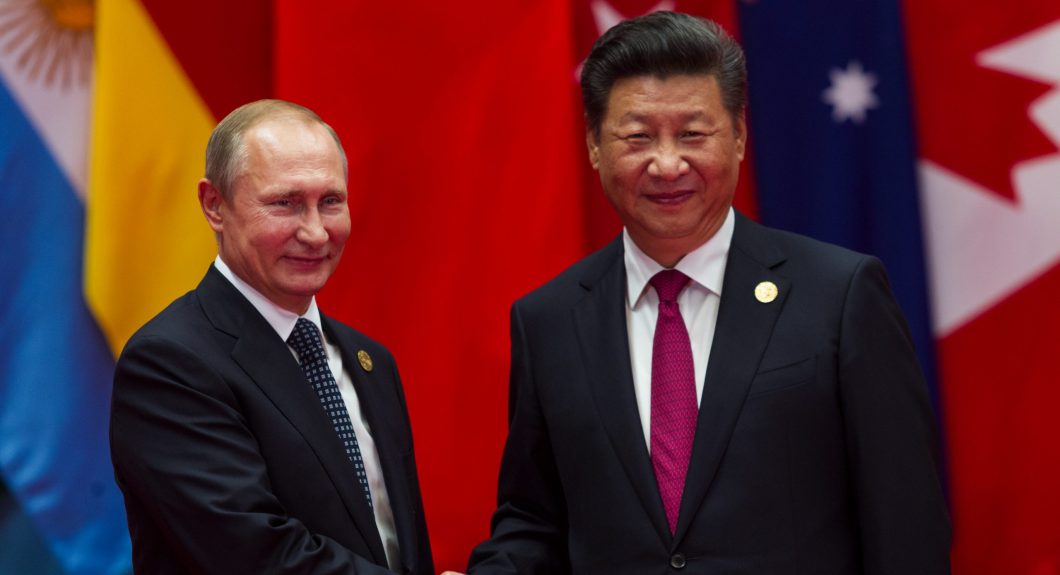Corporate behavior evinces the dominant beliefs of society. In China, those beliefs are not pluralistic. And that is increasingly the case in the US.
China's Commercial Cunning
Only a couple of weeks before Vladimir Putin invaded Ukraine, the Russian despot stood confidently with Chinese leader Xi Jinping as their countries declared the world was entering a “new era.” China was on Putin’s side even before Russian boots first stepped into Ukraine on February 24. How is it possible that the United States has such a close trading relationship with a country actively supporting Russia’s attempt to conquer a sovereign state?
Aaron L. Friedberg’s Getting China Wrong represents the definitive one-volume answer to that question. In under 200 pages, the Princeton professor shows how American policymakers’ misunderstanding of the strength and ambitions of the Chinese Communist Party gave it the decisive opening to challenge the liberal democracies for dominance of the 21st century. This book should be considered the go-to explainer of the Chinese government and the challenge it poses to Western democracies.
Friedberg’s short treatise shows how the totalitarian worldview of the Chinese Communist Party (CCP) forms the basis of China’s strategy to become the world’s dominant power. To Friedberg, the problem is not necessarily with the CCP’s communist roots, but more with its Leninist structure and worldview. Leninism is a totalitarian vision for political organization born in the chaos of the Russian Revolution in 1918. Its adherents are often highly paranoid of Western influence and obsessed with centralizing power. Whereas the Soviet Leninists in Moscow collapsed three decades ago, the Chinese Communist Party only grew stronger and more ambitious as it benefited from deep trade ties with the West.
As implied by the title of the book, Getting China Wrong is premised around what Friedberg sees as the United States’ greatest strategic failure in decades. This story begins in the twilight years of the Cold War, when the United States and China were de-facto allies. The United States used the Sino-Soviet split to its advantage in the Cold War by providing China with cutting-edge weapons and technology while it later helped China begin to open its economy. Given the context of a mutual Sino-US interest in opposing the Soviets, this structure for the relationship worked well for both parties.
After China joined the World Trade Organization in 2001, a toxic mix of inertia and perverse business interests kept the United States’ China policy asleep at the wheel.
Once the Soviet Union fell, however, the strategic rationale for this relationship disappeared. Friedberg pinpoints the 1990s and early 2000s as the crucial years in solidifying the decades-long American engagement policy toward China. Missing the rationale of balancing Soviet power, American policymakers believed that building a rock-solid economic relationship with China would lead to one of two desirable outcomes. A growing middle class and exposure to Western ideas would either soften the Chinese Communist regime or socialize the country to become a “responsible stakeholder” for the U.S.-led international order.
From then on, the U.S. engagement policy worked to deepen trade exchanges between the West and China to change the country.
The heady confidence of U.S. policymakers in that era appears shockingly naive today, but engagement was reasonable enough at the time. After all, the United States towered over the world after enjoying a complete victory in the Cold War and also oversaw the liberalization of Asian tigers like South Korea and Taiwan. Friedberg says that the real failure lay in the continual commitment to engagement over decades, despite increasingly clear evidence of the strategy’s failure. After China joined the World Trade Organization in 2001, a toxic mix of inertia and perverse business interests kept the United States’ China policy asleep at the wheel until the Trump Administration.
This economic engagement was a vital pillar of the Chinese Communist Party’s long-term strategy of embedding itself into the global economy. By doing so, the CCP could subtly subvert the U.S.-led international order while simultaneously building a parallel Chinese-led one. With enough Western technology, know-how, and capital, the Chinese economy would eventually grow enough to overwhelm American leadership by its sheer mass.
Getting China Wrong makes a critical contribution to the debates over the nature of the CCP, especially in its description of Xi Jinping’s role as the CCP’s General Secretary. In 2013, he rose to the leadership of the Party. Xi promptly shelved the CCP’s oft-hailed “soft authoritarianism” and China’s quiet approach on the global stage to become more oppressive at home and revel in a newfound belligerence abroad.
Friedberg argues that Xi Jinping’s approach is a product of the CCP’s long-held strategy and worldview – Xi has only put the pedal to the metal. The implication of this argument is that even when Xi dies, the United States will still face an implacable adversary in China. Friedberg is at odds here with some scholars, like the Commerce Secretary’s Senior Advisor for China, Elizabeth Economy. She has argued that China’s aggressiveness may be unique to Xi’s personality and consequently that China might be a better partner with a different leader.
Friedberg’s cutting analysis shows that this struggle with the Chinese Communist Party might be existential, no matter what the West might prefer.
These aren’t simply arcane debates from the ivory tower. Answers to these questions strike at the future of China’s relationship with the Western world. Is it reasonable to hope that a future CCP leader would moderate China’s goals to a point that the West could accept a kind of détente with China, or are the attitudes of the Chinese Communist Party so hostile to liberal democracy that it will never see for itself a place within the liberal international order? Friedberg’s cutting analysis shows that this struggle with the Chinese Communist Party might be existential, no matter what the West might prefer.
As always, the challenge of strategic analysis doesn’t primarily lie in identifying a problem. Solving it is the hard part. Friedberg concludes his book by laying out a Western strategy to defeat the CCP’s challenge to the West in the 21st century. His focus on the ideological and economic elements of the China challenge bears heavily on his strategy for a victory of the West in this New Cold War.
Friedberg makes the case for what he calls “partial disengagement.” He argues that the world’s liberal democracies should fundamentally reimagine China’s place in the global economic order. He shows that in the ashes of the Second World War, the United States led the construction of a trading bloc consisting primarily of capitalist democracies that would follow basic rules of economic engagement, aligned with the United States’ anticommunist policy. After the end of the Cold War, however, the United States attempted to expand the trading order to include its former adversaries like China, which eventually only weakened the order.
Friedberg argues, then, that it is time for the United States and its allies to selectively redefine the terms of trade with China to ensure that liberal values are advanced, not harmed, by international trade. In an essay for the Texas National Security Review, he calls this “Globalization 2.5.” Friedberg’s recommendations focus on compelling China to halt its predatory economic strategy with tools like technology restrictions, export and investment controls, and diversified supply chains.
These moves will certainly be essential to choke off the CCP’s ability to take advantage of Western economic openness. But Friedberg should have also detailed the ways that the United States can cultivate a healthy economic order with the other liberal democracies. Blocking Chinese economic predation is only half the battle; encouraging open trade within the liberal order is the other. The Biden Administration is not interested in making the difficult decisions that would enable us to build a positive trade policy. Although the Administration rolled out its hallmark Indo-Pacific Economic Framework (IPEF) during Biden’s tour of Asia last month, it leaves something to be desired in substance. An open trade policy would ensure Western solidarity and provide developing economies with a credible alternative to Chinese money. The United States should confidently outline how globalization can benefit itself and the world, and take the lead in defending it against 21st century challenges.


